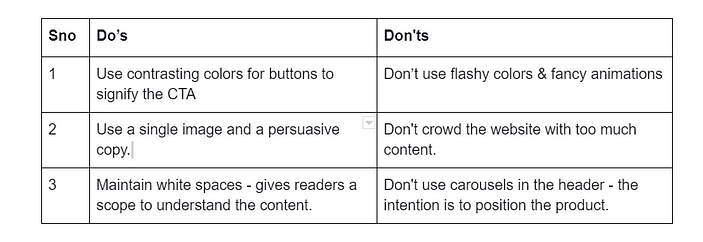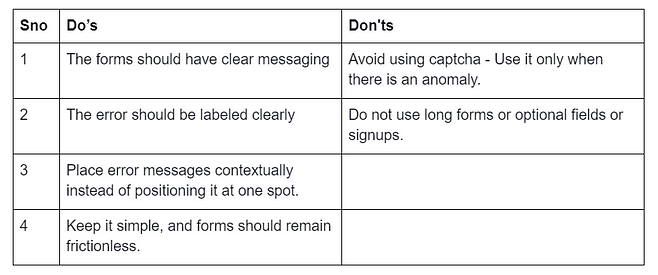The fundamental law of economics dictates that the creation of similar products saturates the market. The producers would reduce the price to attract consumers and improve the business. There’s a need to stand out by creating differentiation. However, very few companies focus on design in creating a design as a USP and for a great consumer experience. Companies such as Apple, Braun, Tesla, etc. were able to thrive because of their brilliant and unique design strategies, which became an advantage and source of distinctiveness in the market. Good design brings added value and is taken into consideration in the development of a good business.
I realized the same about the SaaS products with the learnings from the session led by Mr. Bharath Balasubramanian, Sr Director of Design, Freshworks. In case you don’t know, Freshworks has reached the scale of a B2C with 40,000 customers and many million users. So, listening to Bharat’s session allowed me to reduce our experiments in design by tuning into his learnings.
As a marketer, who collaborates with the design and product team often, I take this opportunity to distill my learnings into ten parts of this 60 minutes super insightful session.
Design best practices across the Customer Lifecycle
1 — The user journey —
This session’s core objective was to dive deeply into the minds of a designer and product owners and enlighten the best practices of a design from a B2B context, recruiting designers, and design acting as a competitive advantage for a brand/product.
Bharath kicked off the session with emphasis on the user journey. He demystified the difference between Art Vs. Design. Business leaders should get their basics correct. Art is an expression of an individual that is subjective, but the design is functional, objective, and has a purpose.
“At high-level designers don’t design for B2B or B2C. They design for users’ needs.” — Bharath Balasubramanian.
2 — Building a seamless and an assertive website —
Bharath taught us the importance of the website and its role as a gatekeeper. He mentioned that a website acts as a storefront; as a business owner, one should take enough care. As the saying goes, the first impression is the best; customers often form an opinion — good or bad — based on the website layout and the functionality as it promotes psychological trust.
Care to be taken while building a website :
- Website header/first fold: Vital to have a slick positioning statement and value proposition.
- Consistency: Creates trust and promotes oneness experience.
- Build a playbook: A standard set of design and content style guides is essential to develop consistent desktop and mobile websites.
- CMS tool: A CMS with components and page templates will ensure to churn consistent pages quickly.
Some of the best practices for graphic design include the following do’s and don’ts

3 — Building an effective signup form —
Bharath stressed on the importance of signup page mentioning that creating a simple sign up helped increase the lead numbers. However, one might experience more junk signups. But that’s a small price one has to pay for higher lead numbers.

4 — User on-boarding —
Bharath started this topic by mentioning about empowering the user via proper and effective onboarding using different methods. According to him, a good product experience starts with great on-boarding.
- Getting started wizard — Use this method to teach users the most important features. It helps users configure some basic steps for the product to work effectively.
- Demo Videos — Videos help orient users toward product adoption. It provides the value of each feature, product terminology, how to set up, etc. — thus making sure to make the set-up as DIY(Do-It-Yourself) as possible
- Factory defaults — Factory default numbers demonstrate the usage of a product. Depending on the product’s context, representative data works like a charm.
5 — Product equal to marketing website —
Bharath gave a new perception to product building by suggesting that a product can be seen as one more marketing website. Also, his pieces of advice were simple and pretty easy to follow with the following nuggets:
- Users learn by doing — Provide articles and contextual content to help users navigate the product usage.
- Guided walkthroughs — Provide a step by step navigational workflow.
- Video can speak a million words — Provide video snippets that help users get the gist of the feature quickly.
6 — Copywriting is design —
As a product marketer, I understand the importance of language and words. However, the sweet surprise came when Bharath insisted on the language and the importance of good copywriting. You don’t often come across designers who emphasize and understand the importance of language. Here are some of the key takeaways –
- Write a copy in a conversational language. Sometimes humor works too.
- Be humble and friendly in language.
- Don’t use technical jargon.
- Write copy for users, not for the QA (Quality Analyst).
- Be clear about the problem and the solution.
7 — Creating a delightful experience —
Bharath mentioned that creating a product hook is supercritical & creates delight to the end-users with features that are built by understanding customer’s needs. The following golden guidelines apply to anyone interested in making a customer-friendly product.
- Don’t get influenced by competition, build the right thing
- Build engaging, habit-forming features
- Delight helps reduce churn
- Consistency reduces the learning curve
- Provide component design guidelines
8 — Hiring the right product designer —
Bharath started this topic by mentioning that every designer hire should have a sense of business and creative understanding. He emphasized to not fall for just some pretty mockups created by designers but look for a continuous flow that explains their business understanding.
Bharath mentioned that designers and product managers share a lot of responsibilities in common, so one needs to look for designers who can think like product managers, and at the same time look for product managers with design sensibilities.
Moreover, he shared a couple of good website sources such as Dribble, Behance, and LinkedIn to check for the designer portfolio and recruiting good designers.
9 — Setting up the right design culture —
Bharath emphasized that one of the most important aspects of a product company’s success is in integrating design and designer in the initial stages of product building. It takes two to tango, product designers & product managers synergize to deliver product value at scale.
10— Final Words — Start building your future today —
It was a super insightful 60 minutes of pure learning. The words & themes of design, product, empathy, user, website, & team culture resonated with all the design and product leaders present.
In the words of Bharath — building a product involves designers, along with the product and engineering team. Designing a great product is the collective responsibility of everyone in the team.
In summary, that’s the essence of consumerizing a B2B SaaS product to win the customer hearts and market.

























